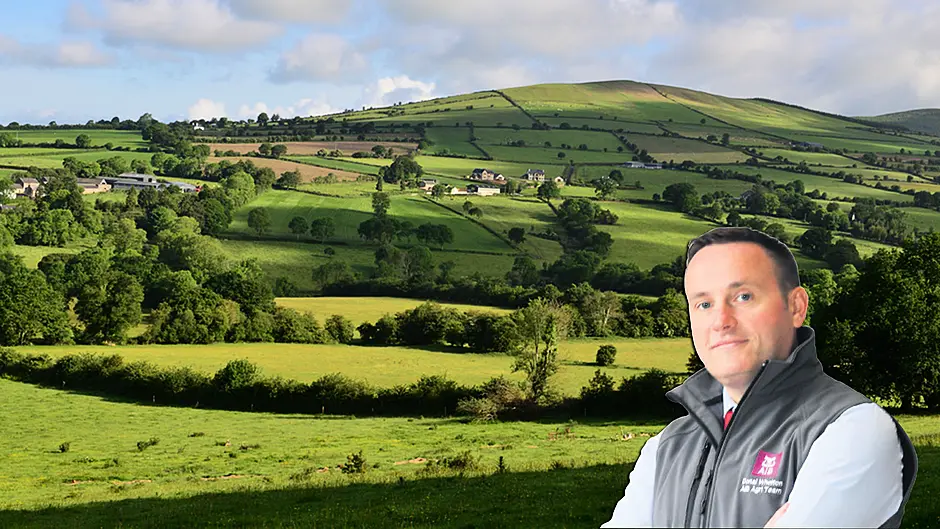Donal Whelton Senior AIB Agri Advisor, discusses the importance of managing cashflow, examines how to calculate your break-even output price and outlines the three steps to dealing with cashflow pressure.
2020 will be a difficult year on many Irish farms and while, at a national level, the sector is in a strong position overall, it is important that all farmers review their own situation to determine what course of action, if any, is needed for the weeks and months ahead.
A useful starting position is to ask ‘What is the break-even price I need this year to cover farm costs, living expenses, repayments and income tax, assuming all other things are equal?’
Calculating a farm’s break-even price is an entirely farm specific exercise. It is the output price that your farm business needs to meet all cash commitments. This calculation should include both capital and interest financial repayments, drawings/household expenses and taxation. Your most recent Profit and Loss accounts for the farm is a useful point of reference, but you should exclude depreciation in your calculations as this is a non-cash expense (the capital portion of repayments is included in its place). This exercise allows you to establish at what price your business will be in a cash deficit.
I have included an example of a break even calculation for a dairy farm, supplying 400,000 litres. In this example the break-even milk price is 27.5c/litre of milk supplied, which is typical of many farms. It is important to note that this example doesn’t include any capital development or change of stock values.
Table 1: Farmer supplying 400,000 litres of milk
| € | C / litre | |
| Farm costs (excluding Depreciation and Bank Interest) | 85,000 | 21.25 |
| Capital Expenditure from Cashflow | - | - |
| Bank Repayments | 15,000 | 3.75 |
| Drawings / Living expenses (required from farm) | 35,000 | 8.75 |
| Income Tax | 5,000 | 1.25 |
| Total costs | 140,000 | 35.00 |
| Less Income from non-milk sales (calves / culls / beef / direct payments) | -30,000 | -7.50 |
| Total Income required from milk sales | 110,000 | 27.5c / litre |
| Break-even milk price | 27.5c / litre | |
Figures used for illustrative purposes only.
Completion of this exercise should highlight your existing position, whether or not you need to take further action such as reducing costs or adding value to your output, and how much action you need to take. It is important to consider how items will change (e.g. stocking rates; family/living expenses etc.) when contemplating the exercise for the period ahead.
THREE STEPS
Some farmers are likely to experience periods of cashflow deficits this year and I believe that farmers should take a three step approach to dealing with cashflow pressure or even potential cashflow pressure:
1) Understand the cause of the cashflow pressure (or likely cashflow pressure)
It is important to understand the cause of cashflow pressure on your farm as this will give you a real insight into how your business is positioned for the medium term. While reduced output prices; weather or COVID related challenges may be the trigger for the cashflow pressure currently experienced or anticipated, there may also be other reasons impacting on the farms cashflow including:
• Building up livestock from cashflow
• Carrying out capital expenditure from cashflow (or a portion of it, from cashflow)
• Highlevel of bank debt / high level of bank repayments
• Farm has a high cost of production
• High level of drawings
• High machinery costs
• Restricted herd / disease / other on farm issues
• Once off high costs
Once you have identified the cause (and/or causes), this will enable you to put a plan in place to take corrective action.
2) Estimate the size of support required:
When you are planning for the weeks / months ahead, it is important to estimate how much additional support your business will require, if any. You will need to make certain assumptions around output price, performance, costs and living expenses. In general, the best starting point is to review the previous year and estimate based on previous performance.
A cashflow projection will help highlight how much of a shortfall will arise (if any) and when it will arise. This will enable you to put the most appropriate solution in place for your business at an early stage rather than continually reacting to cashflow problems during the year. A simple cashflow planning template is available at www.aib.ie/farming.
3) Develop a solution:
Once you understand the cause of the cashflow pressure and from completing the cashflow projection you will now know how much of a shortfall your business is likely to incur, you can develop a solution. This will put you in a strong position if you are meeting your bank to seek support.
It is worth highlighting that the earlier you engage with your bank the more options that may be available to you, and the greater impact it will have on your business. For instance, increased COVID-19 related expenditure may be able to be termed out under the new SBCI Credit Guarantee Scheme.
From AIB’s perspective, an example of some of the typical support measures that are available to customers experiencing short term cashflow difficulties include:
i) Short-term increase to working capital facilities
ii) Short-term loan facilities
iii) SBCI Credit Guarantee Scheme
In some instances, the cost of credit may increase as a result of these measures.
If you are experiencing or expect to experience cashflow difficulties, the important thing to remember is that are a number of support options available. Take the time to inform yourself, identify the cause or causes of the problem and estimate the level of support required. Solutions are best tailored at an early stage and early contact with your bank, if support is required, is key. You can visit our website at www.aib.ie/farming for more details or indeed call to your local AIB branch if you would like to discuss possible solutions in more detail.
Warning: The entire amount you have borrowed will still be outstanding at the end of the interest-only period.
Warning: The cost of your repayments may increase.
Lending criteria, terms and conditions apply. Allied Irish Banks, p.l.c. is regulated by the Central Bank of Ireland. SBCI funding is supported by Council of Europe Development Bank, European Investment Bank Group & Government of Ireland.











